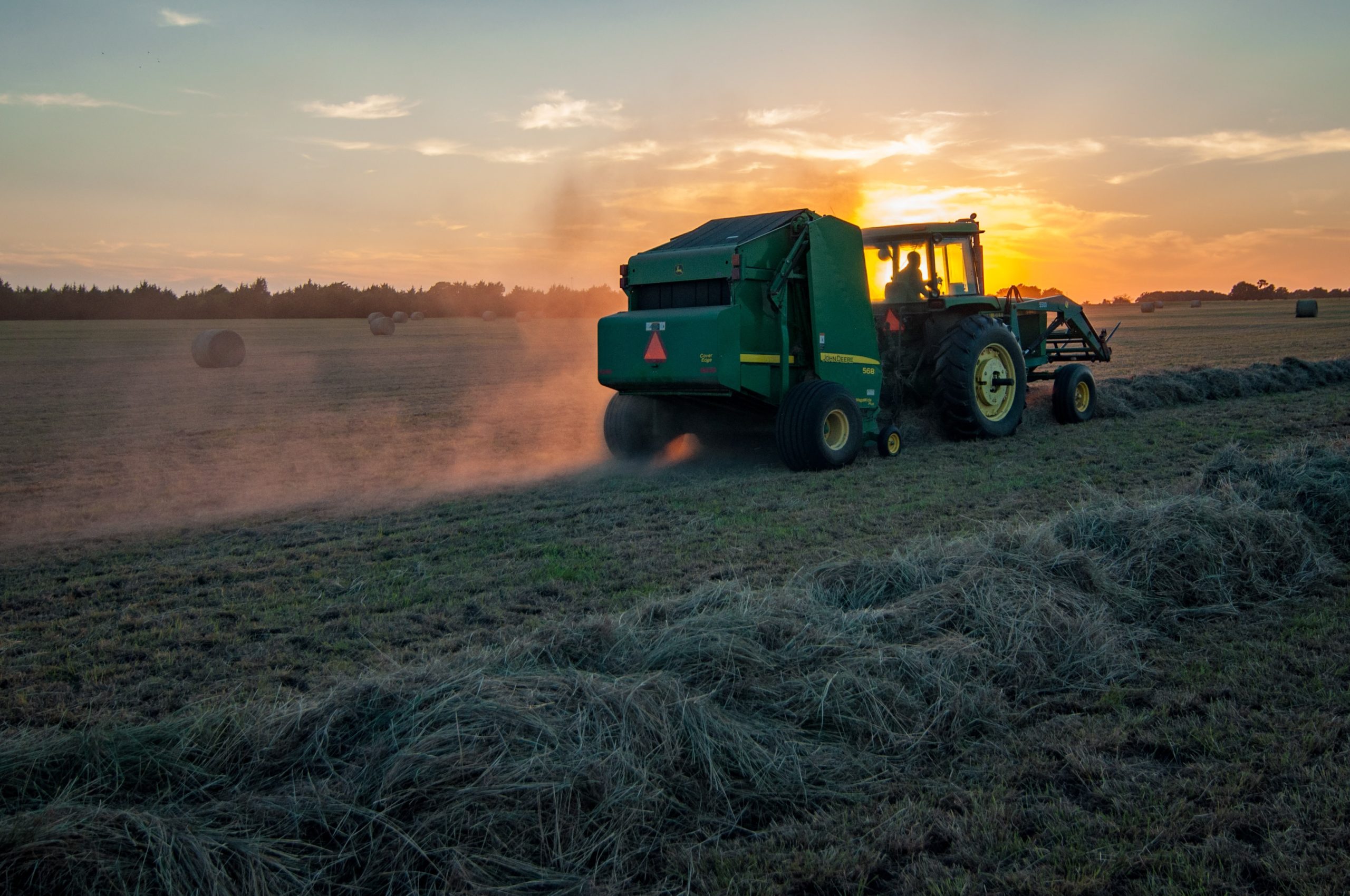Two Die in Separate Tractor Accidents. Farm Accident Kills West Michigan Man. Six-Year-Old Killed in Farming Accident. Tractor Rolls Over and Kills Driver. Man Consumed by Methane Gas and Dies on Dairy Farm. PTO Shaft Causes Fatality on Local Dairy Farm.
These are the horrific headlines that title gut wrenching stories about the loss of human life on the run of the mill dairy farm. The stories that ensue are absent of the days and weeks of healing from a loss of limb, grieving over a loss of life or the rehabilitation from a freak accident like Danielle Nauman of Sparta, Wisconsin has faced.
“On the afternoon of March 26th, I walked up along the skidsteer and stopped next to the pallet forks to read a text about a cow being in heat. Somehow the skidsteer, operated by my neighbor, jumped out of neutral, and swung towards me, with the pallet forks hitting me right in the knee, fracturing my tibia plateau.” She continued, “I spent a week in the hospital before I could have surgery. They used what basically looks like an “L”-shaped bracket and nine screws, along with a cadaver bone, to fix the knee. Then I spent a month in a nursing home having daily physical and occupational therapy.”
Danielle is home now and continues to have physical therapy twice a week. Originally, she was told she would be 90 days non-weight bearing on that leg and now they are telling her she may be walking unassisted by the end of July. However, she won’t be back to “normal” for a full year.
Add in the financial hardship for someone without health insurance and the perfect storm is brewing for bankruptcy. Danielle explained, “At this point in time, my bill from just the hospital and my two ortho appointments are over $78,000 before insurance. That’s not counting the $2,200 ambulance ride, the month in the nursing home or my outpatient therapy. I’m lucky that everything should be covered by my health insurance, besides my $3,600 deductible.” She gained health insurance when she recently changed jobs, she explained, “If this had happened a year ago, I’d be completely ruined financially. I’m not sure what I would have done then. I’d probably still be laying in the weeds.”
In the most recent ag census taken by the USDA in 2012, there were 52,194 farms in Michigan that utilize approximately 215,000 workers (owner/operators, hired workers and family members). The National Agricultural Statistics Service (NASS) information from 2013 states there are, on average, nine injuries for every 1,000 adults involved in farming operations. This would equate to 1,935 farm related injuries every year.

Familiarity can be detrimental to any farm. Being in your work environment day in and day out makes it difficult to see hazards that may be present. In addition, farm accidents are no respecter of people and while some can never be avoided, safety on the farm can be increased by paying attention to precautions.
The National Ag Safety Database (NASD) website raises compelling reasons for accident preparedness and safety precautions. If you are unable to work because of an accident, who will do the work? How will being short-handed affect your business? If people who work for you are injured, how does that affect your workers’ compensation insurance rates? Who covers for workers while they are gone?
If that’s not enough, consider agriculture’s most valuable natural resource: the youth. While the family farm has long been known as a wholesome place to raise a family with far reaching benefits of character and work ethic, it can also be a dangerous place for young children that can have devastating repercussions. According to the Cultivate Safety website, one child dies in an ag related incident every three days and 33 children are injured in an ag related incident each day. Sixty percent of ag related fatalities happen to children who are not working. And it appears the trend is not going in the right direction as the number of ag related injuries among youth ages 10-19 is increasing.
According to the NASD, once you know what the hazards are you can install safeguards to eliminate the dangerous aspects of the equipment, modify behaviors and work practices and wear personal protective gear to lower the likelihood of an accident. A complete checklist covering emergency preparedness can be found on the NASD website at nasdonline.org. This comprehensive checklist includes everything from what is needed in case of a fire, safe areas for children and chemical handling and storage to the use of personal protective equipment, the proper safety precautions of large equipment and the precautions of working with livestock.
A safety checklist specific to children and youth is also available at the Cultivate Safety website. This checklist can be used to perform safety checks on the farm, enhancing the safety of children who live, work and visit the farm. The National Farm Medicine Center and National Children’s Center for Rural and Agricultural Health and Safety designed the Cultivate Safety website to provide easy access to agricultural safety information and resources for farmers, ranchers and supervisors.
“While this has been a very painful experience and difficult few months for me, I can be thankful this didn’t happen to my son.” Danielle concluded, “This has made me more aware of safety precautions needed for our farm and if it makes someone else scrutinize their safety practices on their farm, I’m happy to share my story.”
Visit NASDonline.org for the comprehensive checklist for safety preparedness and for more information specific to youth, visit CultivateSafety.org or contact the National Children’s Center for Rural & Agricultural Health & Safety Phone: 800-662-6900 Email: nccrahs@nullmarshfieldresearch.org.
–Melissa Hart
This article was originally published in the July 2018 issue of the Michigan Milk Messenger.

